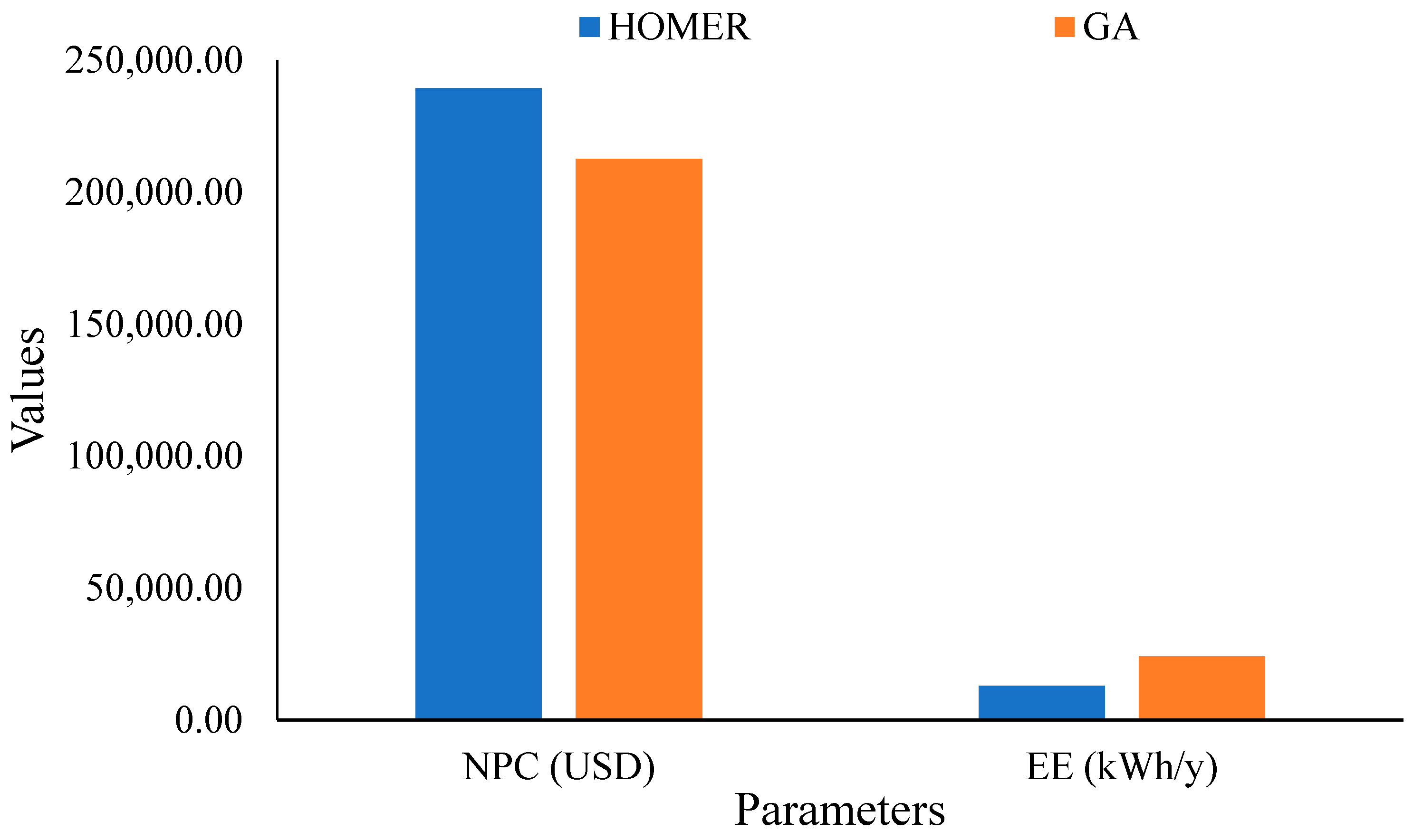

It is found that PV-Li-ion represents the best configuration, with TNPC of $23,427 and cost of energy (COE) of 0.23 $/kWh. By integrating the proposed DSM, the results have shown the following improvements: with RF = 100%, the energy demand and TNPC are reduced by 7% and 18%, respectively, compared to the case of using solely supply-side management. After validation against the HOMER software, further techno-economic analyses including sensitivity study are undertaken, considering different battery technologies.
#Validation homer energy results code#
The proposed HRES is first modelled by an in-house MATLAB code based on a multi-agent system concept and then optimized by minimizing the total net present cost (TNPC), subject to reliability level and renewable energy penetration.

To further advance those studies, this paper presents a novel approach by integrating demand–supply management (DSM) with particle swarm optimization and applying it to optimally design an off-grid hybrid PV-solar-diesel-battery system for the electrification of residential buildings in arid environments, using a typical dwelling in Adrar, Algeria, as a case study. Based on a Bibliometric analysis performed by authors, it was concluded that most studies simply adopted supply-side management techniques to perform the design optimization of such a renewable energy system. The growing research interest in hybrid renewable energy systems (HRESs) has been regarded as a natural and yet critical response to address the challenge of rural electrification.


 0 kommentar(er)
0 kommentar(er)
